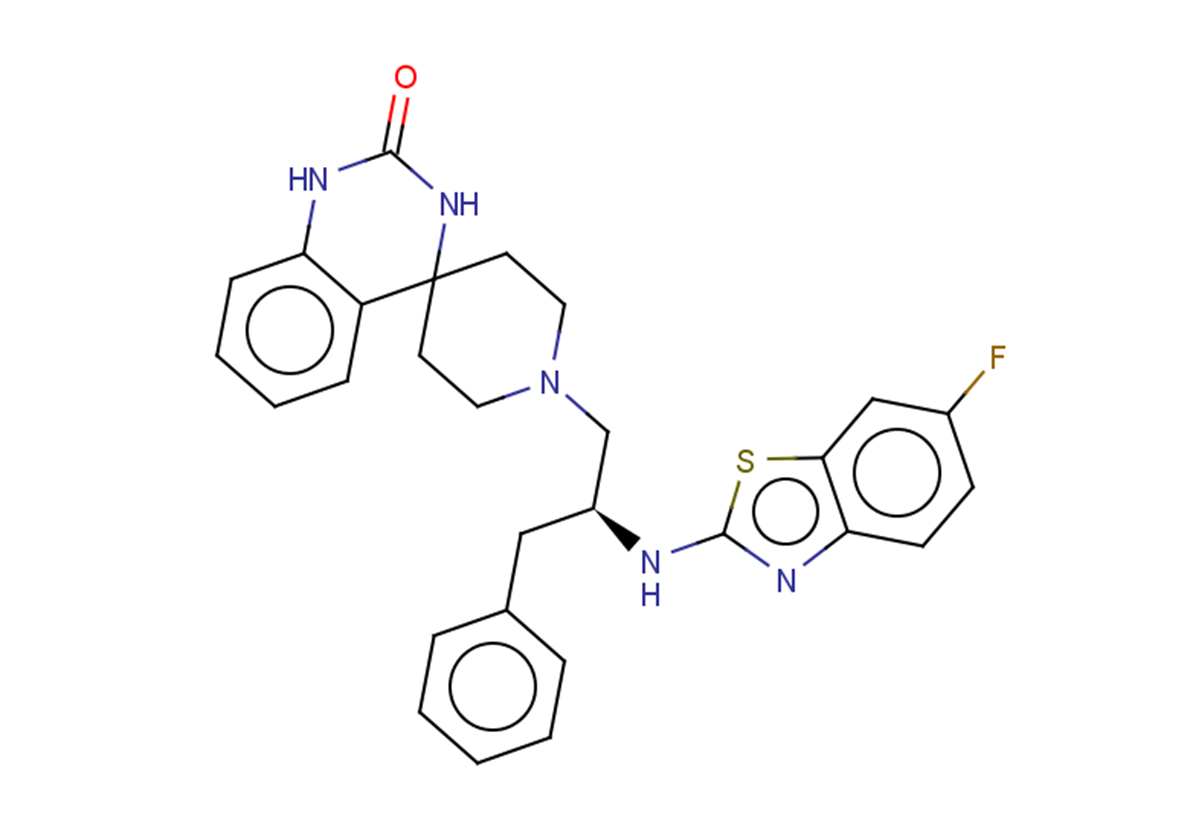
NVS-ZP7-4
CAS No. 2349367-89-9
NVS-ZP7-4( —— )
Catalog No. M24067 CAS No. 2349367-89-9
NVS-ZP7-4 is a inhibitor of Zinc transporter SLC39A7 (ZIP7).
Purity : >98% (HPLC)
 COA
COA
 Datasheet
Datasheet
 HNMR
HNMR
 HPLC
HPLC
 MSDS
MSDS
 Handing Instructions
Handing Instructions
| Size | Price / USD | Stock | Quantity |
| 2MG | 85 | In Stock |


|
| 5MG | 143 | In Stock |


|
| 10MG | 267 | In Stock |


|
| 25MG | 537 | In Stock |


|
| 50MG | 767 | In Stock |


|
| 100MG | 1053 | In Stock |


|
| 200MG | Get Quote | In Stock |


|
| 500MG | Get Quote | In Stock |


|
| 1G | Get Quote | In Stock |


|
Biological Information
-
Product NameNVS-ZP7-4
-
NoteResearch use only, not for human use.
-
Brief DescriptionNVS-ZP7-4 is a inhibitor of Zinc transporter SLC39A7 (ZIP7).
-
DescriptionNVS-ZP7-4 is a inhibitor of Zinc transporter SLC39A7 (ZIP7).
-
In VitroNVS-ZP7-4 increases ER zinc levels, suggesting functional modulation of ZIP7.
-
In Vivo——
-
Synonyms——
-
PathwayOthers
-
TargetOther Targets
-
RecptorZinc transporter SLC39A7 (ZIP7)
-
Research Area——
-
Indication——
Chemical Information
-
CAS Number2349367-89-9
-
Formula Weight501.62
-
Molecular FormulaC28H28FN5OS
-
Purity>98% (HPLC)
-
SolubilityDMSO:120mg/mL (239.22 mM)
-
SMILESO=C(NC12CCN(C[C@H](Cc3ccccc3)Nc3nc(ccc(F)c4)c4s3)CC2)Nc2c1cccc2
-
Chemical Name——
Shipping & Storage Information
-
Storage(-20℃)
-
ShippingWith Ice Pack
-
Stability≥ 2 years
Reference



-
Physalin O
Physalin O possesses anti-inflammatory activity, it exhibited conjugating abilities with GSH and also showed significant nitric oxide (NO) production inhibiting activities.
-
JC-1
JC-1 is a fluorescent lipophilic carbocyanine dye. It has been used to measure mitochondrial membrane potential.?JC 1 can be used in a probe for measuring mitochondrial membrane potential by flow cytometry. JC-1 fluorescence is usually excited by the 488?nm laser wavelength common in flow cytometers. JC-1 (2.5?μM) exposed to murine L1210 lymphoblasts, can be detected the presence of both cytoplasmic JC-1 monomer and mitochondrial J-aggregates in these cells.
-
2-Hydroxy atorvastat...
2-Hydroxy atorvastatin calcium salt is a hydroxy metabolite of Atorvastatin calcium salt which is a potent HMG-CoA reductase inhibitor (IC50 = 8 nM).



 Cart
Cart
 sales@molnova.com
sales@molnova.com


